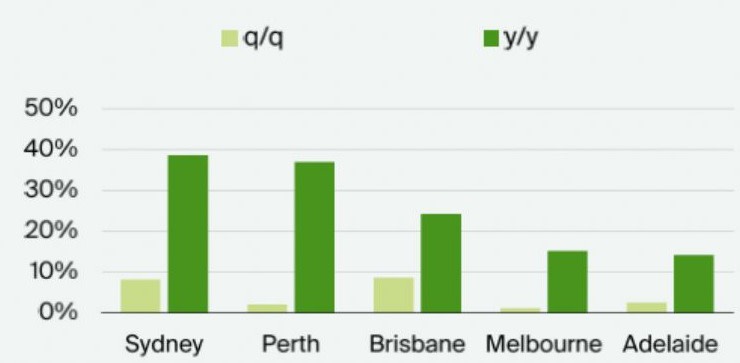Resources
Newsletter
Stay up to date and with the latest news, projects, deals and features.
Subscribe
Australia’s industrial vacancy rate has fallen to a record low, according to data released this week.
In its review of the Australian industrial sector, global property consultants Knight Frank found vacancies in east coast capital cities fell by 18 per cent in the first quarter of the year.
Just 445,000sq m of available space remains vacant along the eastern seaboard, which is a record low.
And just 10 per cent of that remaining space is available in Sydney—39 per cent of it in Melbourne, while Brisbane accounts for 51 per cent.
With stiff competition among tenants for limited available space, rents have continued to climb. Brisbane rents are up 8.6 per cent for the quarter and Sydney is up 8.2 per cent.
Knight Frank says a record supply of about 2.5 million square metres coming to market in 2023 is not expected to alleviate the widespread undersupply. About 43 per cent of the new space is pre-committed and a further 10 per cent owner occupied.
The overall drop in vacancy in Sydney, Melbourne and Brisbane follows a 56 per cent fall over the 2022 calendar year, and an 8 per cent fall over the last quarter of 2022.
Across Australia’s east coast there is now almost 2 million square metres less space available now than was the case in the peak in October 2020, when there was 2,405,857sq m—a fall of about 82 per cent.
Industry leaders have been warning of critical industrial and logistics space shortages for more than a year, arguing an additional 1.8 million sq m of space will be needed in Australia, or twice as much as it currently has, over the next five years to accommodate the forecast growth of online shopping.
Knight Frank partner for research and consulting Jennelle Wilson said Sydney had overtaken Perth for the fastest growing rents year on year, with prime rents up 38 per cent over 12 months.
Prime rent growth average across major capitals

“Adelaide and Perth reported 2.5 per cent and two per cent rental growth over the same period, while Melbourne saw moderate growth of 1.5 per cent on limited deals across most submarkets,” Wilson said.
According to the new data, both prime (340,921sq m) and secondary industrial space (103,760sq m) are at record lows as tenants compete for space.
National head of industrial logistics James Templeton said ongoing strong tenant demand was being met with constrained supply, which had led to increased competition.
“Secondary vacancy is now particularly low as tenants are grabbing immediately available options, with less of a concern regarding grade as long as it is functional,” Templeton said.
“Prime vacancy is also seriously low, however this grade is being somewhat replenished as speculative developments start construction.”
Last-mile industrial and logistics managers are increasingly building speculatively, safe in the knowledge tenants are clamouring for space.
“Indeed speculative space accounts for more than two-thirds of the current vacancy – with almost 194,500sq m of this still under construction and not available for imminent occupation,” Templeton said.
“As existing options have been absorbed speculative developments have taken a greater weighting in available space.
“This has also supported further prime rental growth with speculative developments needing to set rents at a level which makes the project feasible – at times a further step upward for the market.”
Templeton said the gradual easing of the cost of materials and supply chain pressures would help the supply pipeline.
The Knight Frank research found Brisbane has a substantial development pipeline, with 843,573sq m forecast to be delivered in 2023, compared to its long-term average of 357,940 square metres.
In Sydney new developments are forecast to reach 807,641sq m, while Melbourne will deliver about 845,231 square metres.